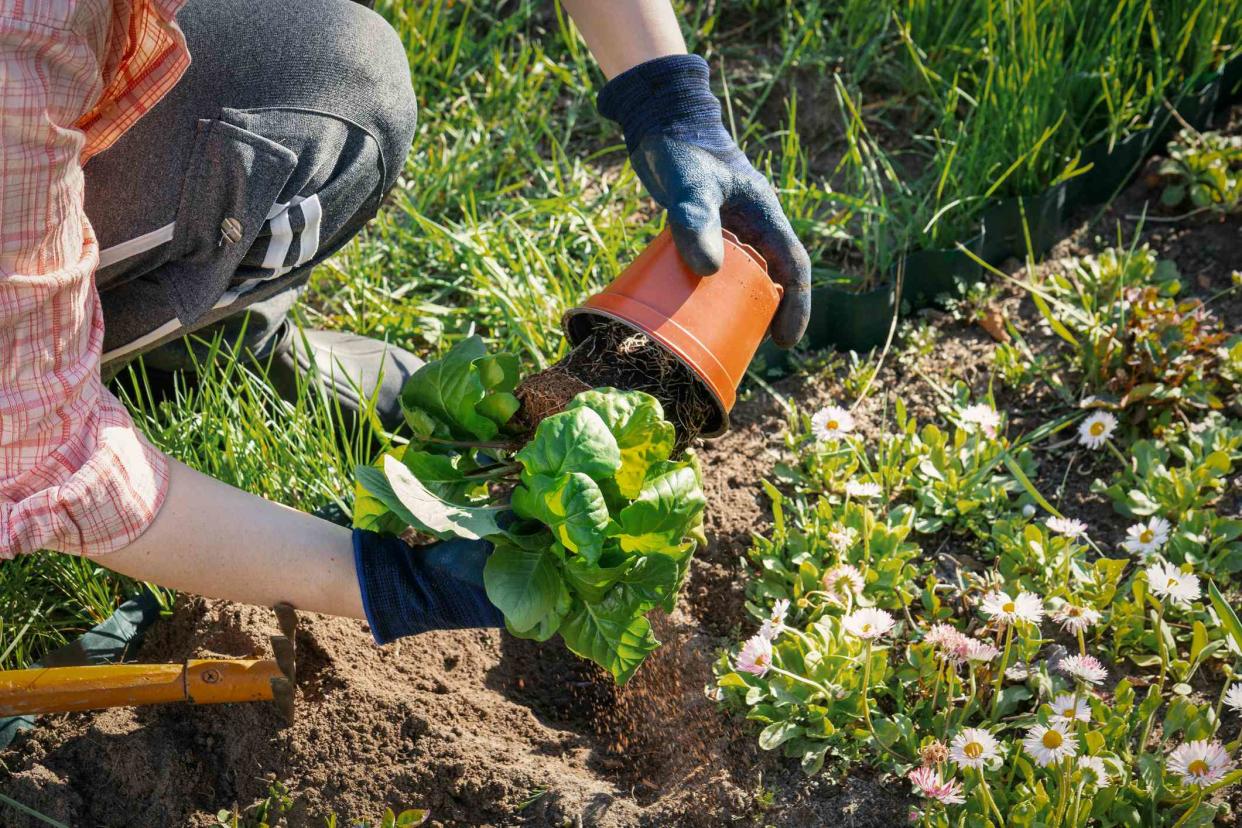6 Ways to Be More Sustainable in Your Garden This Year, According to Pros

rbkomar / Getty Images
ICYMI, sustainability is in this year, and unsustainable gardening practices are out. Not only are sustainable gardening practices more eco-friendly, but they are also more affordable and result in a low-maintenance and ecologically balanced landscape.
If you’re new to eco-friendly and sustainable gardening, it can be hard to know where to start. We spoke to two gardening experts to discover what practices can help homeowners be more sustainable in their gardens.
According to the pros, here are six ways to be more sustainable in your garden this year.
Meet the Expert
Mary Phillips is the Head of Native Plant Habitat Strategy/Certifications at the National Wildlife Federation.
Ashleigh Smith is the Managing Editor at True Leaf Market, a nationally certified organic, non-GMO seed and horticultural company based in Salt Lake City, Utah.
Use Native Plants
Switching to native plants is one of the best ways to be more sustainable in your garden. Native plants are water efficient, low-maintenance, and essential to the local ecosystem. They provide habitat for pollinators, feed local wildlife, and help combat environmental issues like pollution and water runoff.
“Choose native plants with different bloom times to provide a continuous food source for pollinators throughout the season, such as columbine for spring, yarrow for summer, and aster for fall,” says Mary Phillips, Head of Native Plant Habitat Strategy/Certifications at the National Wildlife Federation.
Want more gardening tips? Sign up for our free gardening newsletter for our best-growing tips, troubleshooting hacks, and more!
Try Companion Planting
Ashleigh Smith, managing editor at True Leaf Market, says companion planting is one of the most overlooked sustainable gardening practices. It involves planting different plant species in beneficial arrangements in your garden. This can be done with various crops, flowers, herbs, vegetables, and more.
“By growing flowers and vegetables in mutually beneficial combinations, gardeners can attract beneficial insects to target known pests, invite more pollinators to the vegetable garden for increased yields, and improve the overall diversity of the garden," Smith says. "Diverse gardens are not only attractive but also experience a decrease in the need for pesticides, herbicides, and fertilizers."
Companion planting is widespread in vegetable gardens, but the principles of this sustainable gardening practice can be applied in any area of your landscape. Phillips advises that native plants should be chosen whenever possible for companion planting.
Use Cover Crops
Cover crops are used regularly in agriculture but have yet to be widely adopted by home gardeners. As their name suggests, cover crops are planted to cover and protect the soil rather than be harvested. They are usually grown with regular crops (or ‘cash crops’) and often planted in the off-season.
“They are typically grown in the shoulder spring and fall seasons or over the winter to reduce erosion due to spring runoff or strong winds," Smith says about cover crops. "Additional cover crop benefits include improved soil tilth, nutrient scavenging, nitrogen fixation, weed suppression, and improved moisture retention."
In the home garden, cover crops are great for improving soil health, choking out weeds, improving soil aeration, and more. They are often referred to as living mulches.
Switch to Organic Mulches
If you aren’t already utilizing mulch in your garden to suppress weeds, improve water retention, and provide nutrients to your plants, this is your sign to do so. Organic mulches are the best for sustainability, so choose wisely. Organic mulches include straw and seedless hay, grass clippings, living mulch (i.e., cover crops), shredded bark, bark chips, shredded leaves, grass clippings, and more.
Replace a Traditional Lawn
Traditional turf lawns are not eco-friendly, which is nothing new. They consume excessive water, provide minimal benefits to wildlife or soil health, and, according to Phillips, turf lawn maintenance (such as mowing, fertilizing, and herbicides) contributes to air, noise, soil, and water pollution. More sustainable options include clover lawns, native wildflower lawns, and more.
Reduce or Eliminate the Use of Chemical Additives
Lastly, the experts agree that reducing or eliminating chemical additives such as pesticides is essential to being more sustainable in your garden this year. This concept is certainly nothing new, but it can be challenging for gardeners to break the habit if they are used to relying on pesticides to help keep their gardens weed-free.
Ultimately, pesticides disrupt the delicate balance of the garden ecosystem and cause harm to pollinators, beneficial insects, birds and other small animals, earthworms and other decomposers.
Luckily, there are lots of eco-friendly alternatives to using pesticides in the garden, including hand-pulling weeds, using natural insecticides (like diatomaceous earth and neem oil), laying down thick layers of mulch to deter weeds, trying companion planting to encourage beneficial insects and more.
Read Next: 11 Actually Easy Ways to Be More Sustainable at Home, According to Experts
Read the original article on The Spruce.

